Some of the links in this post may be affiliate links.
Are you struggling and frustrated with brown leaf tips on your indoor spider plants (Chlorophytum comosum)? It can be confusing, but like any plant problem, it is ultimately up to you to determine the true cause. In this post, I will help you be your own detective and help you figure out exactly why your spider plant has brown leaf tips.
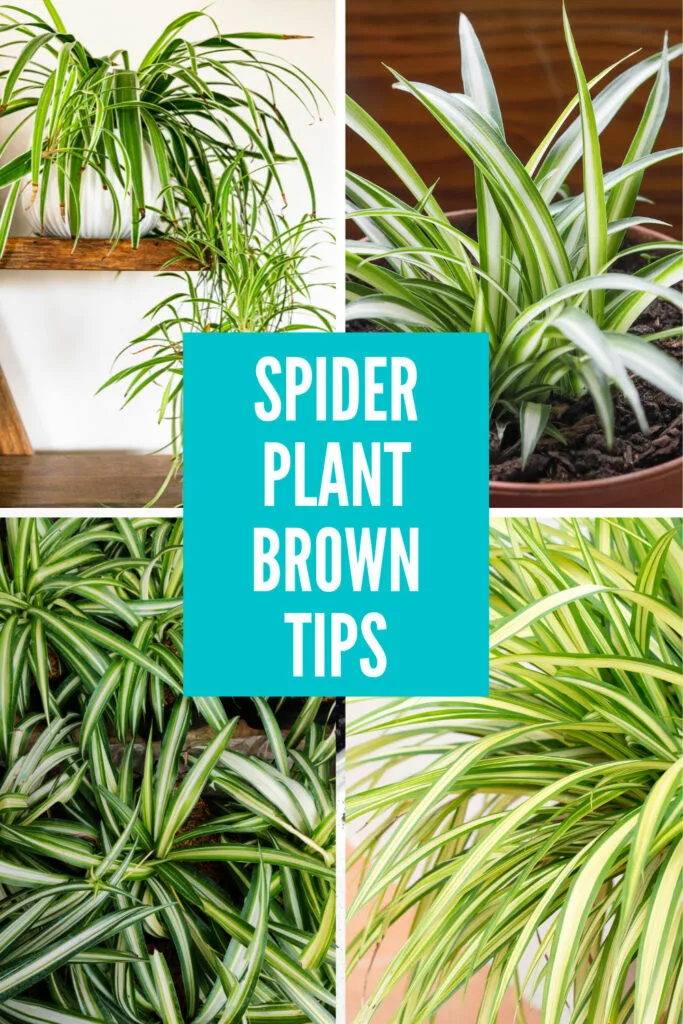
Once your spider plant’s leaf tips turn brown, there is nothing you can do once the damage is already done. Simply trim the brown leaf tips off with a pair of sharp scissors.
What you can do though is to focus on addressing the potential cause(s) so that new growth will be free of brown tips.
Here are 8 common reasons why brown leaf tips occur in spider plants:
Table of Contents
Table of Contents
Now allow me to elaborate!
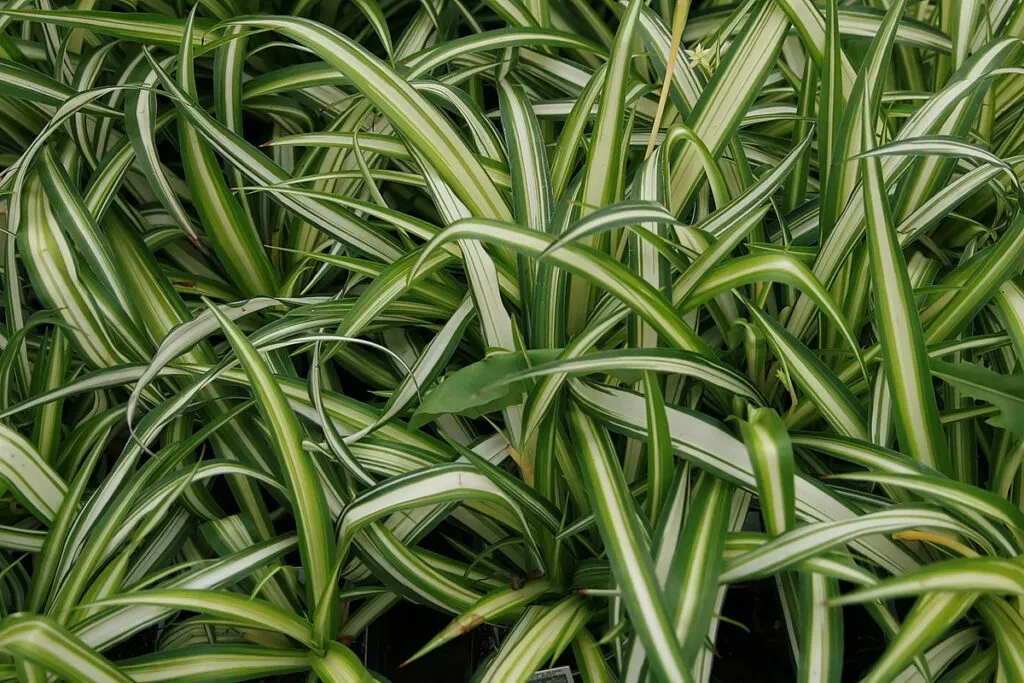
8 Reasons For Brown Leaf Tips on Spider Plant Leaves
1. High fluoride in tap water
Michigan State University states that spider plants are susceptible to fluoride toxicity in tap water. Although fluoride in tap water is good to deter tooth decay, excess fluoride can result in leaf tip burn in certain plants.
Fluoride toxicity will manifest itself with brown areas both at the tip of the spider plant leaves, as well as along the margins or edges of the leaves.
If you are watering with fluorinated tap water, you may want to improve the water quality that you supply to your spider plant. Consider collecting and using rain water, distilled water, or use RO (reverse osmosis) water.
If you have been watering with tap water for a while, you may want to flush your soil with distilled water a few times to removed any built-up fluoride, and then water like normal after that point.
Better yet, if your plant is root bound and needs a larger pot, go ahead and repot it with fresh soil and also use distilled water to flush out any accumulated fluoride.
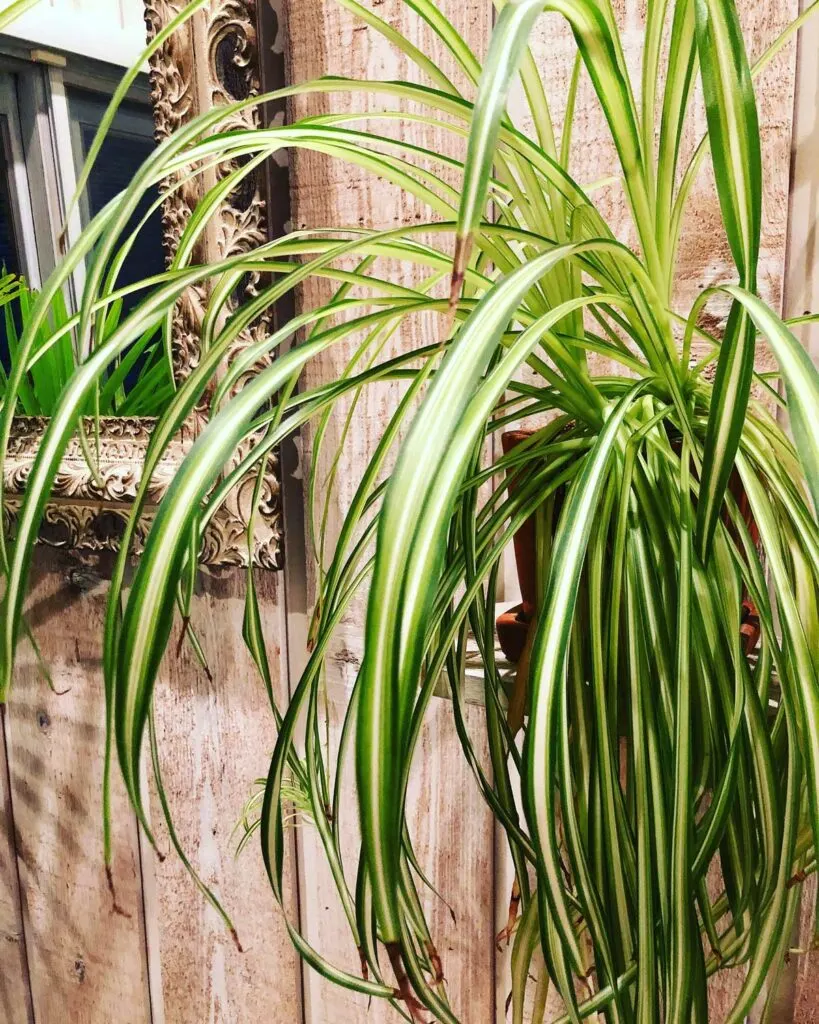
2. Dry soil
While many plants are not bothered by fluoride like spider plants are, most are very sensitive to overly dry potting mix.
Keep an eye on your spider plant potting mix moisture. I will give you a word of caution though. Do not use a moisture meter! In fact, I wrote a post on the dangers of using moisture meters for plants.
In a nutshell, they are mostly junk and are notoriously unreliable. I’ve witnessed many of my readers and clients tell me repeatedly that their moisture meter registers as “moist,” yet the potting mix is decidedly dry when you feel it with your fingers.
Often times, the meters will stay stuck on “moist,” often times for even weeks or months at a time, despite the potting mix having gone bone dry.
The solution is to simply use your finger. Once the top inch or two of potting mix is dry, go ahead and water.
Spider plants do not like to go completely dry, but you can safely allow the top quarter of the potting mix to go dry before watering again.
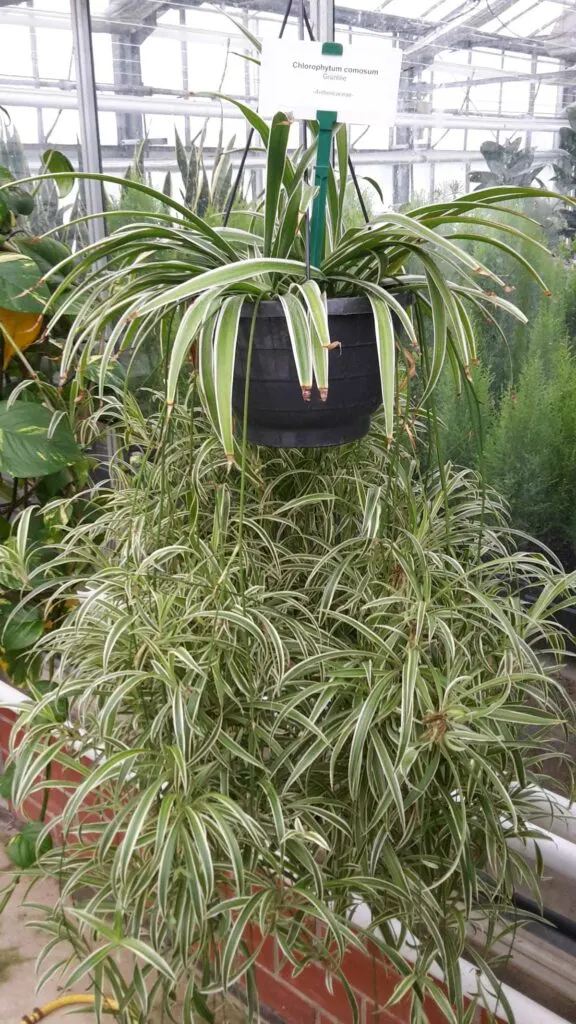
3. Wet soil
Soil that has stayed overly wet for extended periods of time can result in root rot and also brown leaf tips.
Ironically, root rot can essentially cause your leaf tips to brown because the roots can no longer take up water to supply to your leaves.
In order to allow your potting mix to dry out in a reasonable amount of time, here are some tips:
- When you water, make sure excess water drains away and never let your plant sit in water for extended periods of time (in the saucer, decorative pot, etc.)
- Make sure your plant is situated in a good location with bright indirect light, or even a handful of hours of direct sun. If you have your plant in a dark, low light location, the potting mix will take much longer to dry out.
- When you repot, only go up one pot size. If you place your plant in a pot that is much too big, the large, excess volume of potting mix will take much longer to dry out.
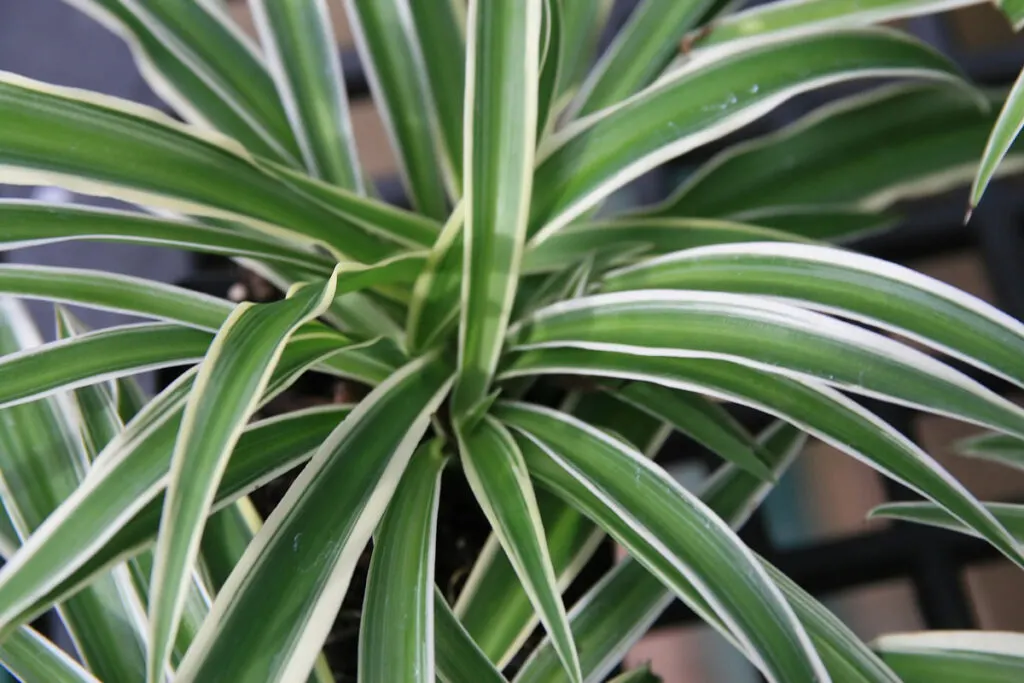
4. Improper watering techniques
Many people are so scared of “overwatering” that they will often go too far in the other direction by only adding a miniscule amount of water when they do water. They will even go so far as to measure out the amount of water.
This type of watering will only moisten some of the roots in your pot, and will cause dry pockets of soil in other areas. If you keep up this type of watering, much of your root system will be desiccated and die, resulting not only in brown leaf tips, but in a dying plant overall.
As long as your plant has enough light and you followed the tips I outlined in the previous “Wet soil” section, you will be ok (and can I also remind you again not to use a moisture meter?)
The proper way to water a houseplant is thoroughly. Always grow your spider plants in a pot with drainage holes, moisten ALL of the soil, and let excess water drain away.
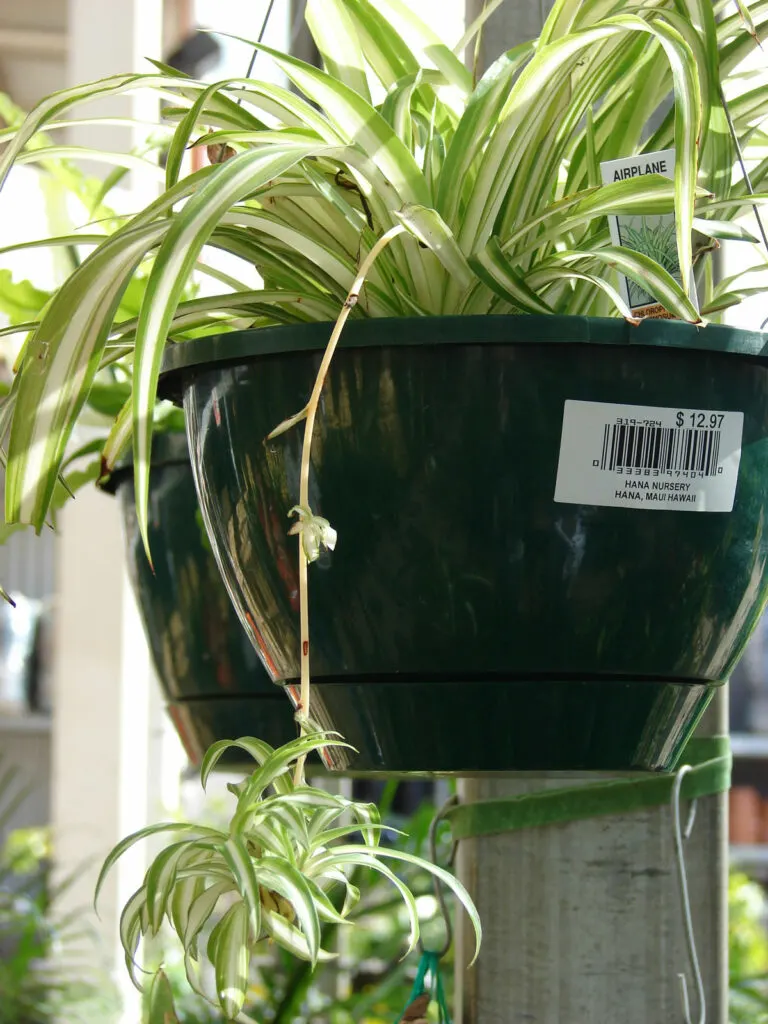
If you have your spider plant in a hanging basket with an attached saucer at the bottom, after you water you may need to tip your plant to the side a little in order to allow any water that has collected in the attached saucer to empty out.
5. Low humidity environments
A low humidity level can also cause brown leaf tips and edges. I like to maintain humidity levels of 40-60% indoors. During the winter season, I like to increase the humidity for my plants, namely by running a humidifier.
Keep in mind that contrary to popular practice, misting does not
You can create more humid conditions by running a humidifier, grouping plants together, or using a humidity tray.
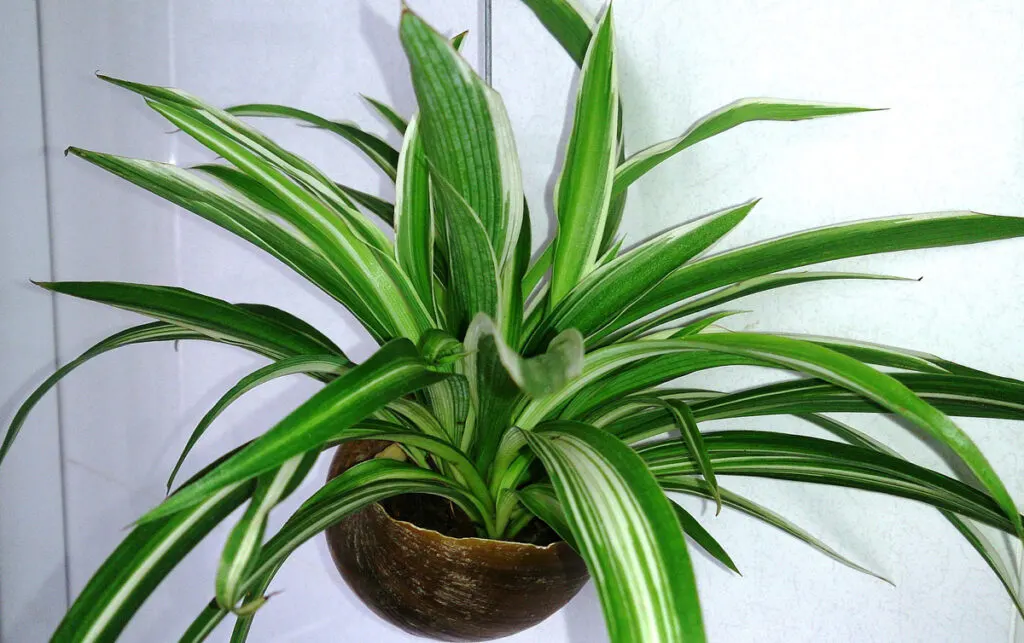
6. Fertilizer burn & salt build up
Fertilizing is an important part of any plant care regiment, but be careful that you are measuring both your fertilizer and your water accurately. Do not eyeball the amounts of the water-soluble fertilizer or water that you’re using.
If your fertilizer solution is too concentrated, it will burn your plant and cause brown tips and leaf edges.
Two things can go wrong that can result in a fertilizer solution that is too concentrated.
- You measured the amount of water correctly, but added excess fertilizer, resulting in too concentrated of a solution.
- You may have measured the fertilizer amount correctly, but didn’t add enough water, thus resulting in too concentrated of a solution.
In order to avoid this, I like to use a kitchen measuring spoon set (dedicated specifically for fertilization) and a plastic gallon jug of water so I can make sure to have the correct fertilizer concentration for my plants.
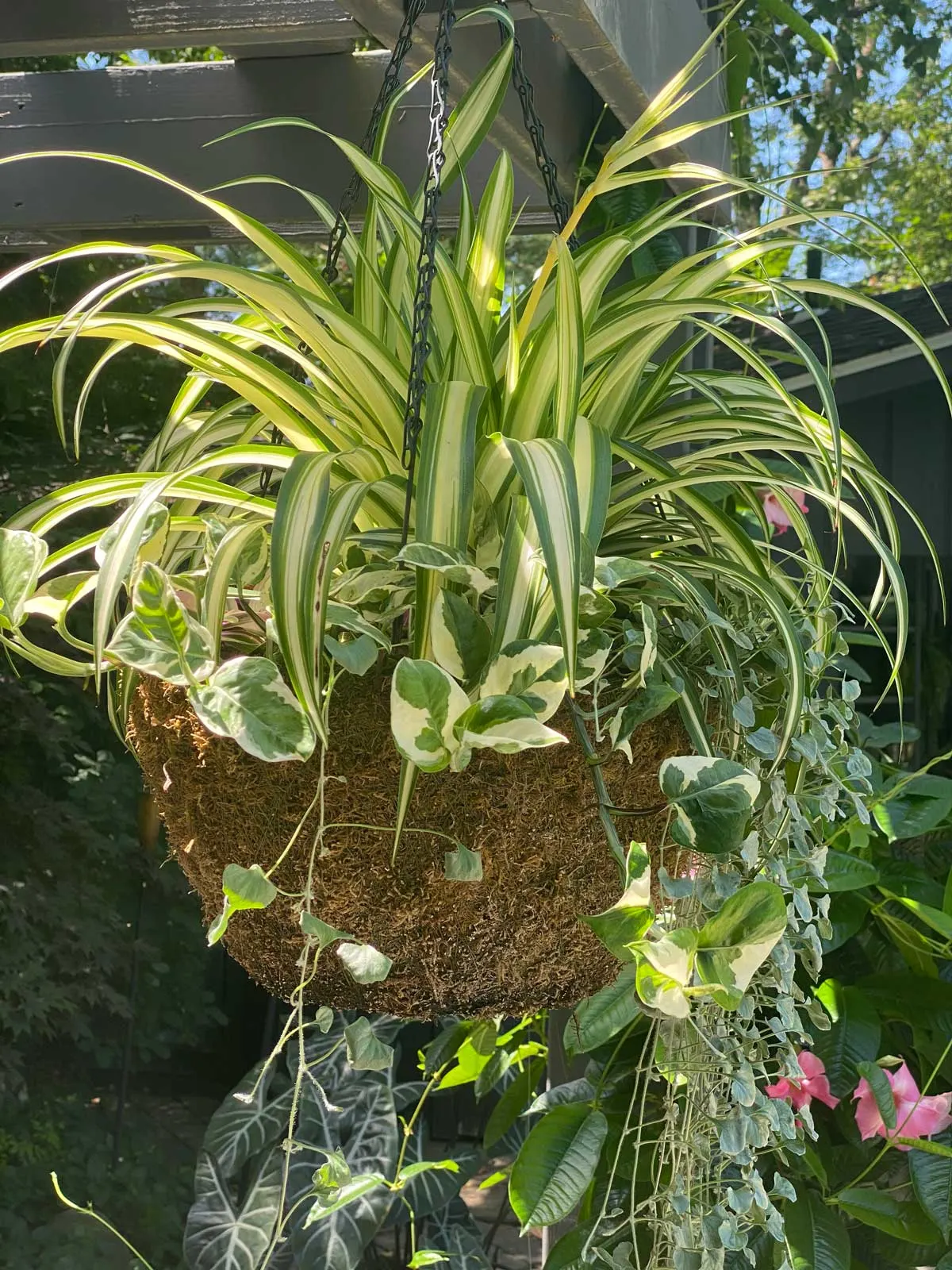
My fertilizer of choice is Dyna-Gro Grow and you can easily get it off Amazon. It’s an amazing, urea-free, complete fertilizer!
Always follow the instructions on a fertilizer label and never eyeball amounts. And if you’re in doubt, add less fertilizer and not more.
Another thing that can happen is that over time, fertilizer salts and minerals from tap water will build up in your soil. If you see crusty, whitish or brownish deposits on the surface of your soil or even around the rim of the pot, these are excess mineral salts that need to be removed.
You can physically scoop out those deposits and remove some of the old soil. This is best done when it’s time to repot your plant so that you can provide some fresh soil for your plant.
Similar to what I discussed in the fluoride section, you can also flush your pot with distilled water a few times to help dissolve any built up salts that are resulting in foliar damage for your spider plant.
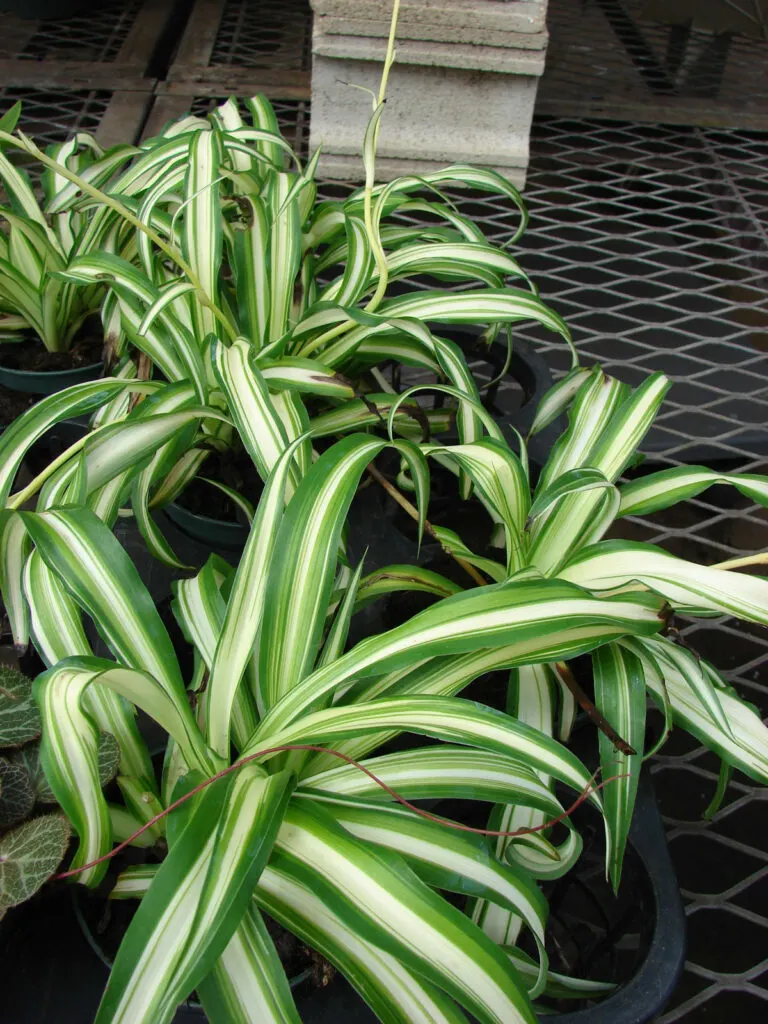
7. Too much direct sunlight
Spider plants can actually take a good amount of direct sunlight, so why have I included this as a cause?
Simply because the more light your plant gets, the more quickly your spider plant’s potting mix will dry out, and we’ve already discussed that dry soil will quickly cause browning tips.
To counteract this, be more attentive of your spider plant if it is growing in sunny conditions. If you find that it is drying out too quickly for your liking, you can also reduce the amount of sun exposure that your plant is receiving.
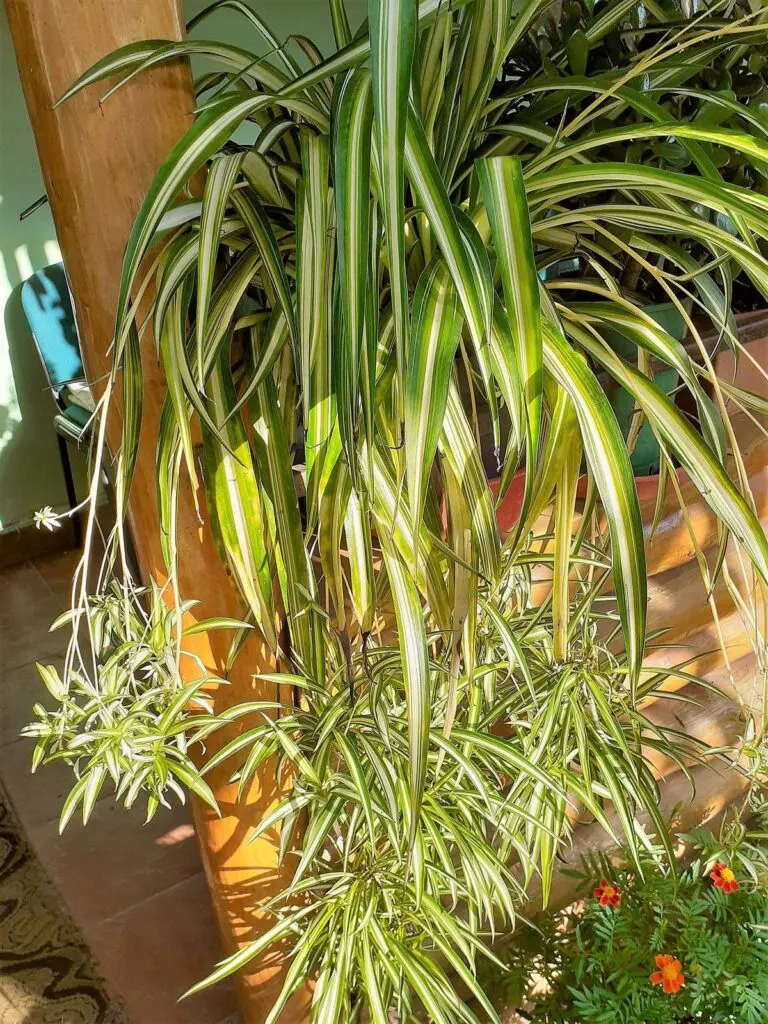
8. Disease
Plant diseases can also cause brown or black tips of the leaves in spider plants.
If your spider plant leaves developed black tips, it could potentially mean you have a bacterial leaf blight. You may see lesions on the leaf tips that eventually turn brown and then black.
If you see any foliage that you suspect could be affected by a leaf blight, remove and dispose of any affected leaves. You may want to try and increase air circulation, and stop misting especially if you do it a lot.

I hope you’ve enjoyed this post on spider plant brown tips. You may also be interested in my post on how often to water spider plant. A regular watering schedule will not always cut it, so be sure to read it and find out why!
If you’d like to experiment with hydroponic growing of spider plants, check out my blog post on how to permanently grow spider plants in water.
Another common problem is spider plants turning white or pale. Check out my blog post on why spider plants turn pale and what you can do about it.

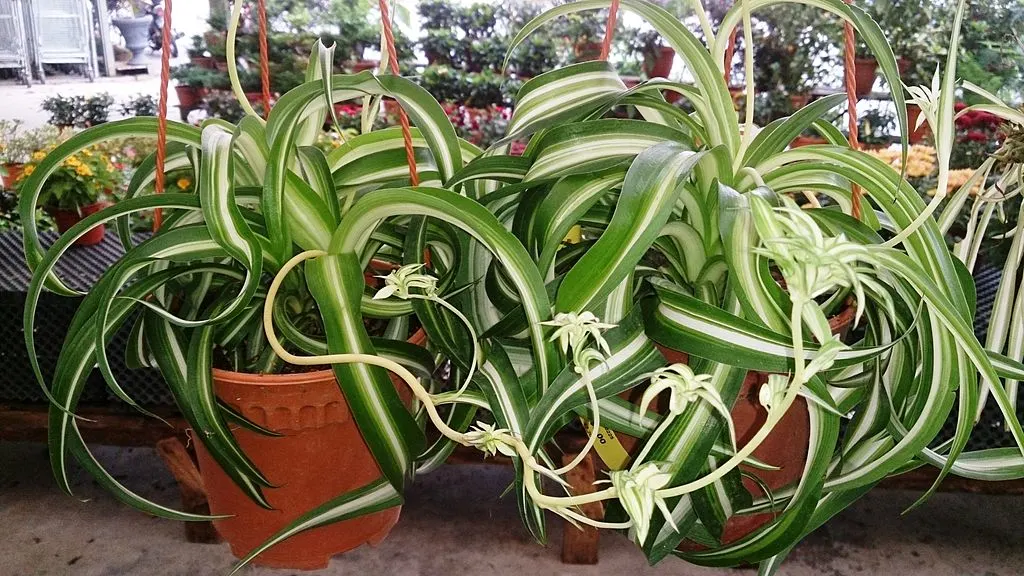
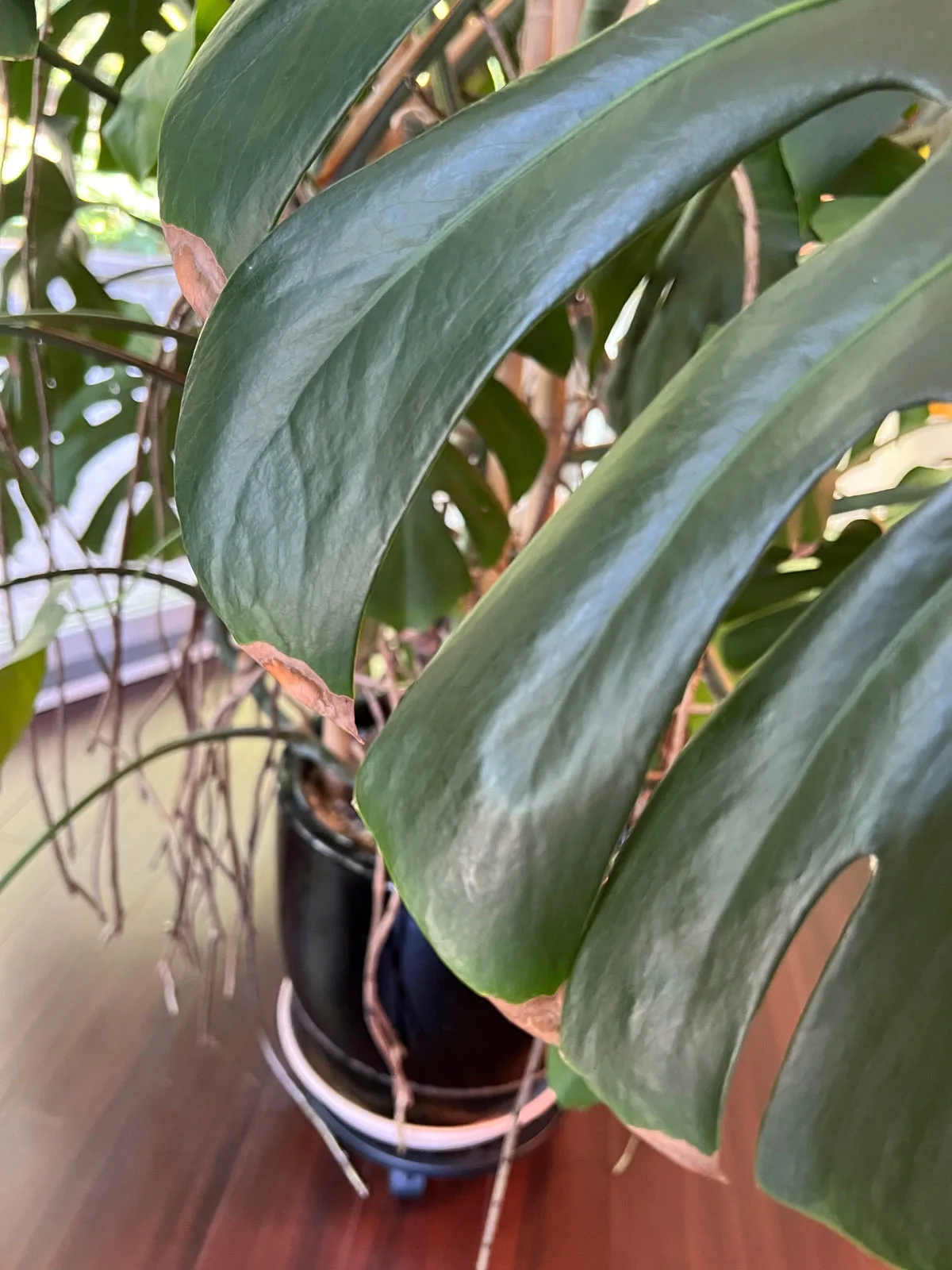
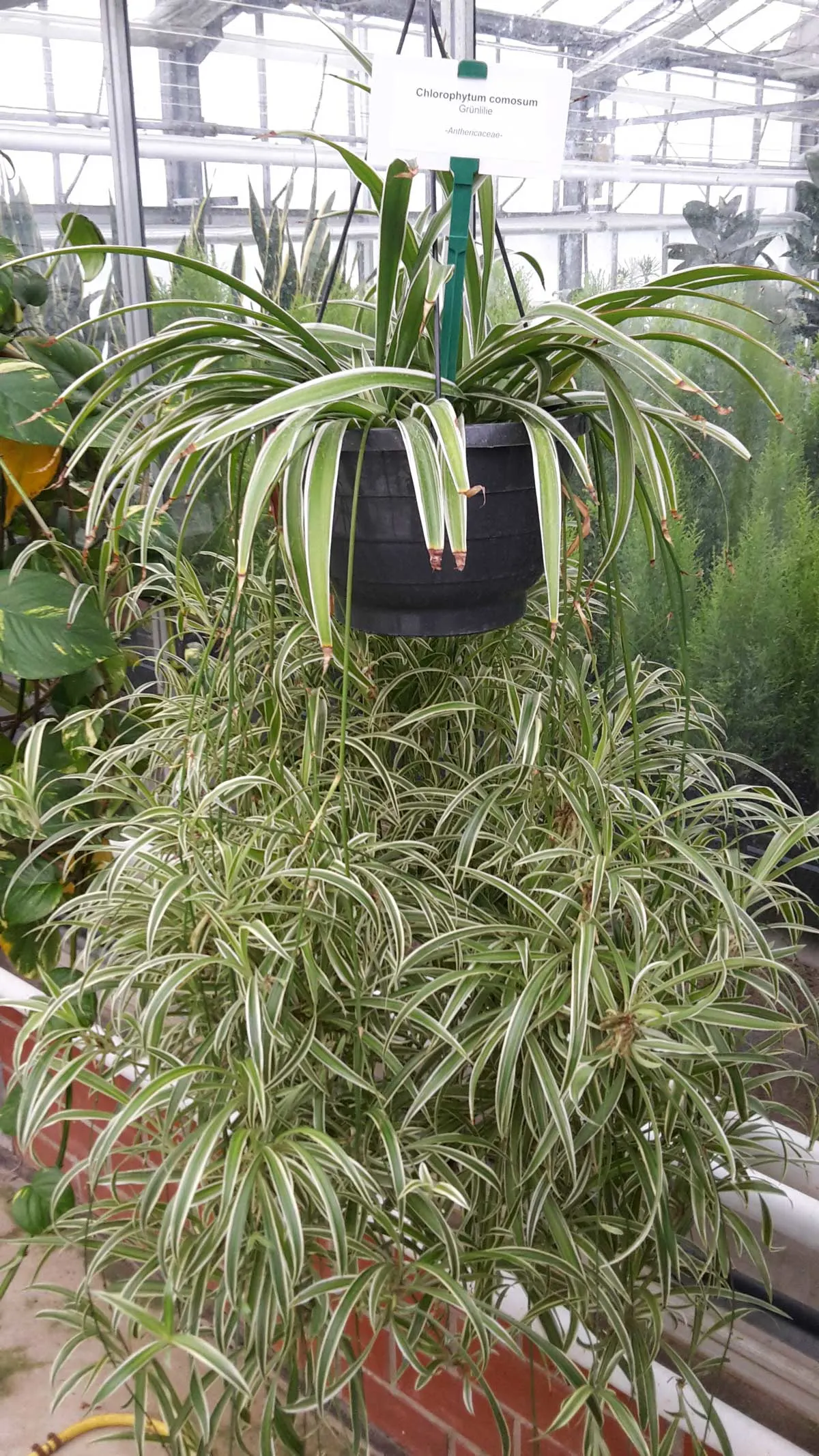
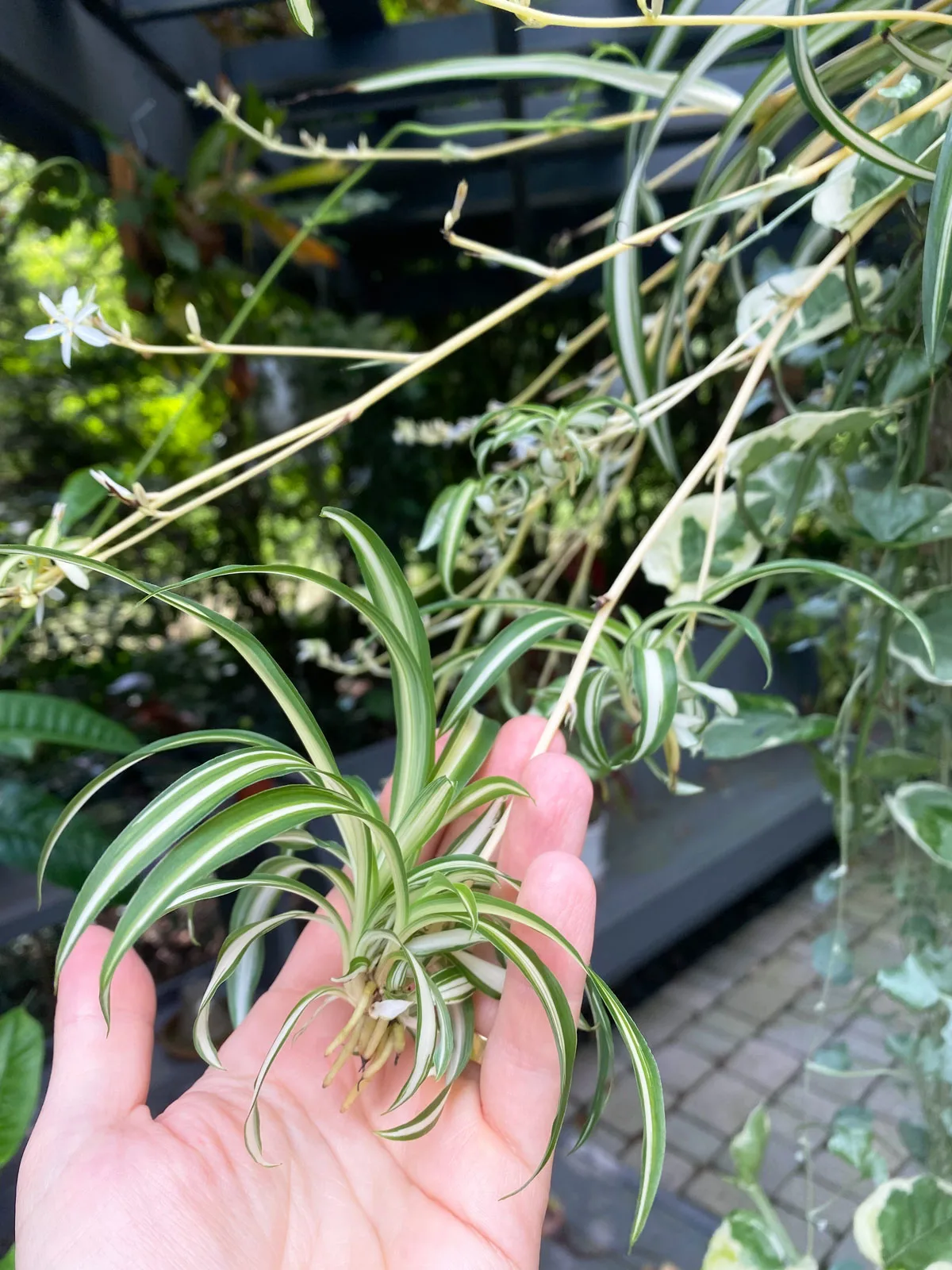
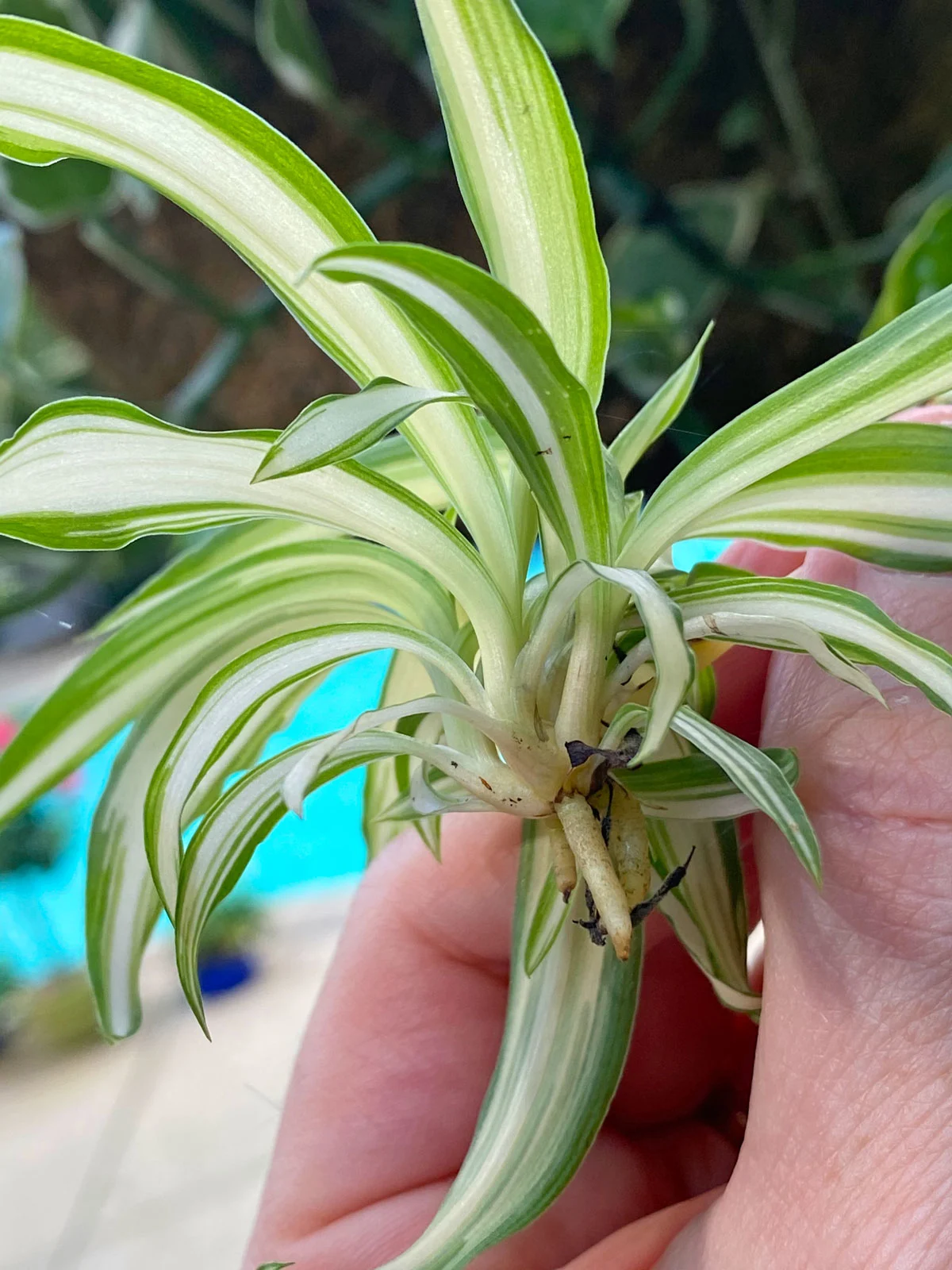
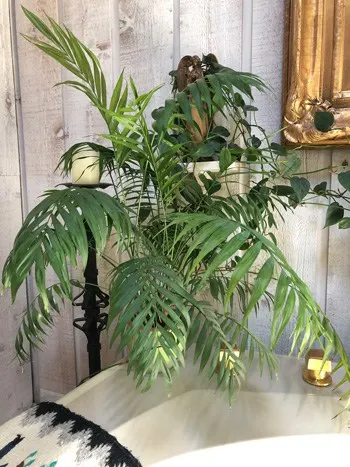
Patti
Sunday 18th of June 2023
My spider plants get a sticky substance on the leaves. Why?
Raffaele
Monday 19th of June 2023
Hi Patti! A variety of pests will secrete what is called "honeydew" which is sticky. Check your plant to see if you have an infestation. Mealybugs, scale, and more will secrete this honeydew. Look closely at your plant and see if you can find evidence of any pests.
Abby Young
Sunday 21st of May 2023
Any tips on using a grow light for my spider plant??? Should I move the plant far away from the light move it underneath,?? How many hours can I keep my spider plant in or around my grow light?? Any info would be helpful thank you. Also thank you for the orchids info it helped alot!!!
Raffaele
Sunday 21st of May 2023
Hi Abby! Glad to hear that about the orchids! :-) It depends on what kind of light you have as far as the distance goes. What kind of light do you have? I'd recommend 12 hours a day.
Laura Atkins
Thursday 23rd of September 2021
40 year old spider. No "pups" in quite some time. Brown tips, moist soil. was thriving when I first moved in. I have a filter on my tap, do I use straight tap water or through the filter? I am cutting off the brown tips now.
Raffaele
Monday 27th of September 2021
Hi Laura! I would use filtered water if you can! Where do you have your plant situated? How far is it from a window and what exposure is it?
Martha
Saturday 7th of August 2021
Thank you for this post! I unknowingly put my spider out in my balcony and it got the brown tips and sooo pale! I brought it inside where it was before and started thriving almost instantly! Question: Can I use mineral water instead of distilled? That's the water I drink. I think my tap water doesn't have flouride, can I still use it for watering my plants then?
Raffaele
Saturday 7th of August 2021
Yes you should be fine to use mineral water :-). I don't see anything wrong with that.